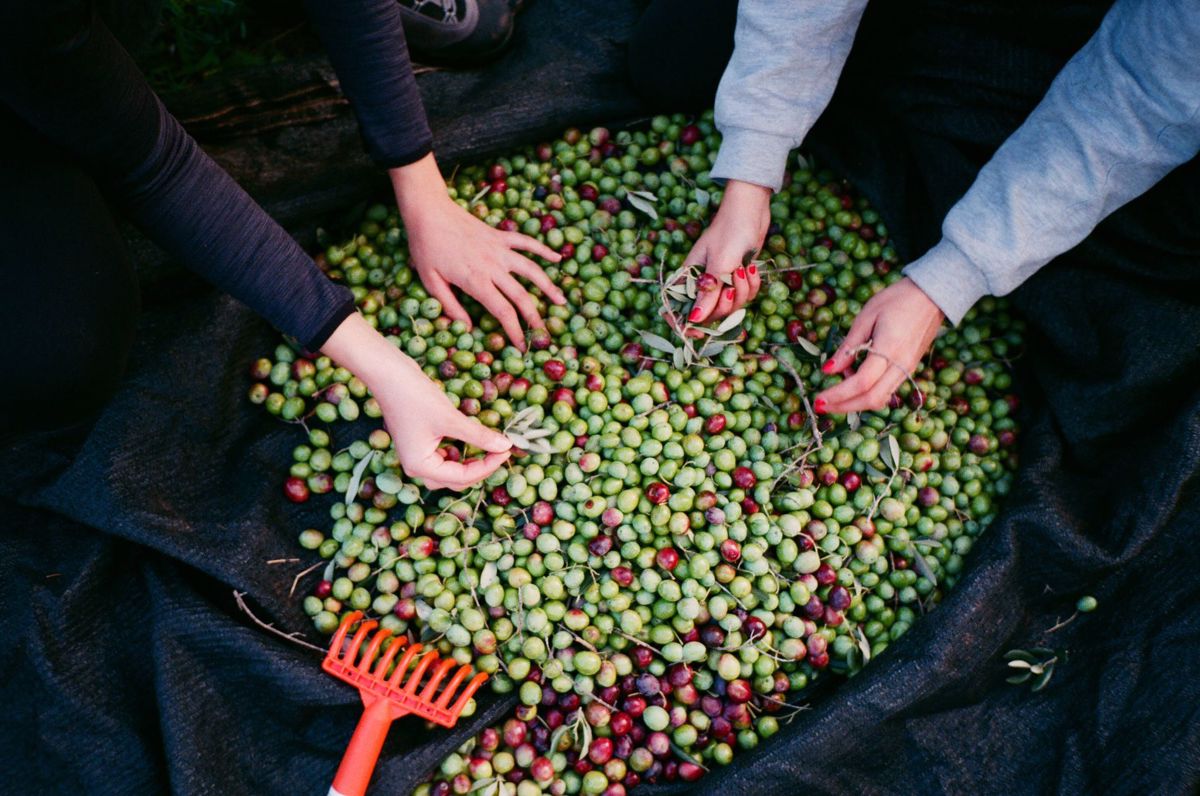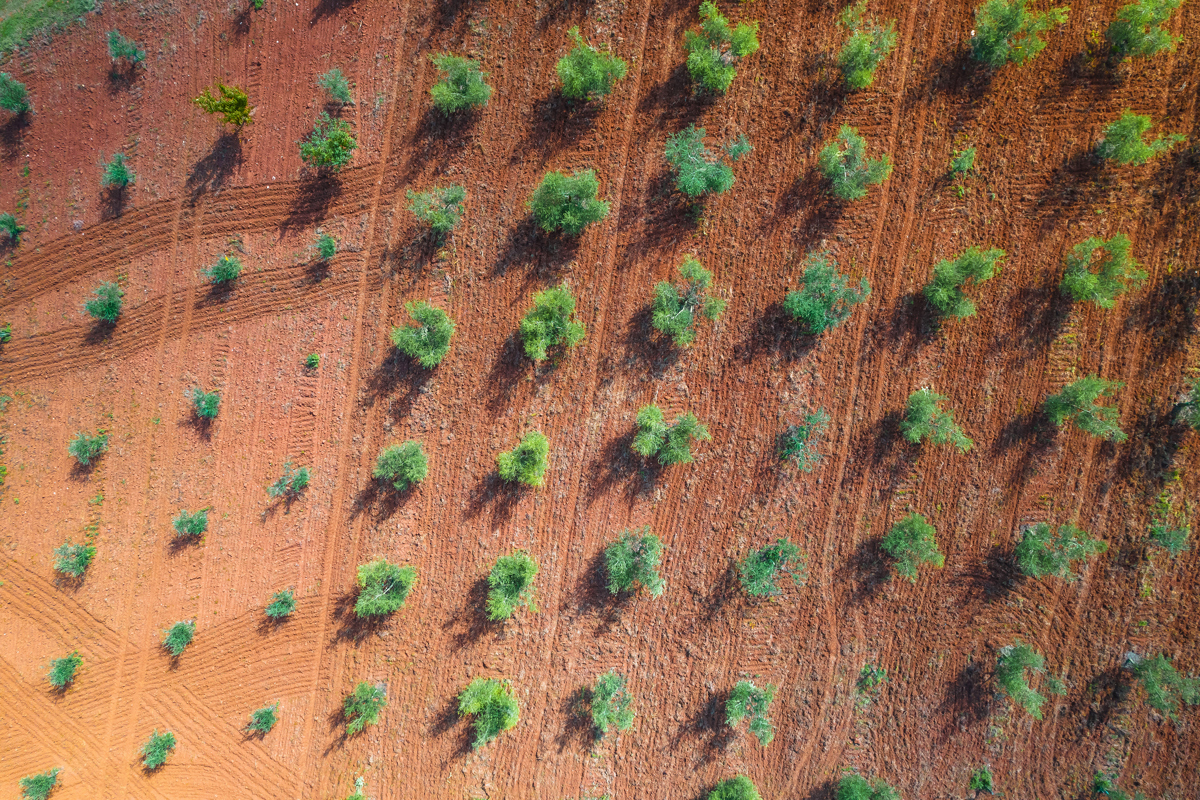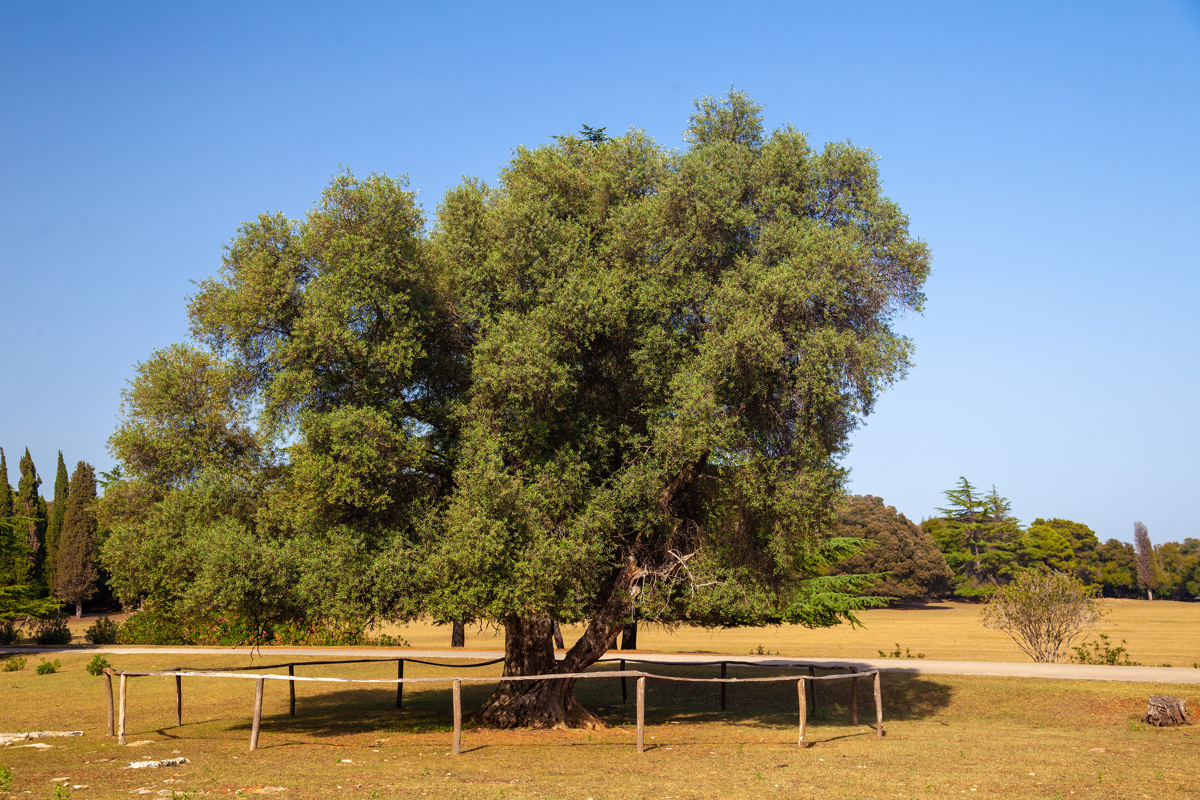“Dušni dan, skale van!”, or “All Saints' Day, out with the ladders!” — it’s a traditional saying which sets the time for olive harvest. Many still abide by it, especially on the Dalmatian islands. Olive picking equals work, a lot of bending and stretching, but also fun, meditation, family time and stress relief! It’s a ritual of connecting with people and nature — and, of course, there’s the excitement about the final product — “the great healer”, as Hippocrates called it, or “liquid gold”, as did Homer. Olive oil, a natural remedy, is a Mediterranean-diet staple and it makes anything taste better.

Basics of traditional olive harvesting
Knowing when to harvest is the key to producing great olive oil. While greener olives generally have an intense grassy flavor and less oil, more mature, purple olives will have a milder flavor and produce more oil that tends to be golden in colour. Many will argue the best harvesting time is when the olives are mottled. And manual harvesting with rakes is the traditional way to do it! Raking the olive branches gets very satisfying, as is taking a break in the peaceful autumn sun. After collecting and cleaning the olives of fallen leaves and twigs, they have to be taken to the oil mill rather quickly — to prevent any new forms of life developing on the precious fruits.

Olive growing in Croatia
Olive cultivation in the Mediterranean goes back to the ancient times — and they say the tradition is as old as civilization. In Croatia, we’ve been cultivating and consuming olives from at least 1500 BC, as it was recently proven by the archaeologists who found hundreds of olive and cherry pits under the sea near Turanj — where an ancient settlement used to be.

Nowadays, Croatia contributes with about 7 million liters yearly to the global olive oil production. From Istria to Dubrovnik, picturesque olive groves stretch throughout our coast and hinterland. Middle Dalmatia is our most important olive-growing region, which produces about 40% of Croatian olive oil. The most common olive variety is the indigenous oblica. 60% of our olive oil is made from this highest quality fruit. And Istria, our northernmost olive-growing region, is the home of buža and bjelica — two much valued local varieties. And famous Istrian olive oil, declared best in Croatia in numerous competitions, truly has a distinctive quality. Pula even has a Museum of Olive Oil.

Where to find some great olive trees
One million olive trees on the Brač island
About one million olive trees grows on the island of Brač. You can hop back and forth around the island and try as many local olive varieties and products as days on your disposal. You’ll never run out of delicious things to try. For those who like to break the tasting with a bit of activity, there’s also a circular walking trail called The Olive paths. It starts and ends at a small, picturesque village Mirca near Supetar and it’s about 6 kilometers long bonding time with the local tradition of olive growing.
Explore our homes on Brač

The old and wise olive tree Brijunka in the Brijuni National Park
The old olive tree Brijunka on the island of Veliki Brijun is proven to be about 1600 years old. Throughout the centuries, it witnessed many social and political turmoils. Even today Brijunka bears fruits of the indigenous buža variety, and it’s used to produce olive oil. Every October about 30 kilos of olives is harvested, of which a bit more than 4 liters of finest extra virgin olive oil is produced. Also, Brijuni National Park in general is definitely a must-see.

Olive gardens of Lun, Pag island
Olive gardens of Lun count more than 80 thousand olive trees spread out on 400 hectares of unique land. Sheep walk freely around surreally beautiful olive trees claimed to be about 2000 years old — and so can you. The perfect Adriatic air, intriguing ancient olive tree trunks, the most peaceful environment imaginable combined, that’s the Olive gardens of Lun. If you’re lucky to come at the right time, you might catch a concert or a play on the spot. Either way, Lun is unforgettable.


